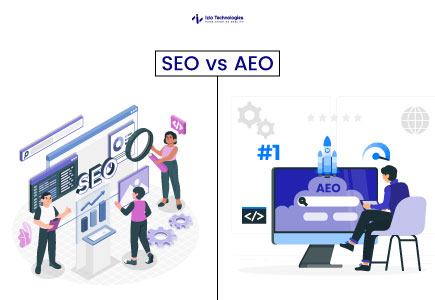Have you heard of a rule book for SEO-Optimized Content? Or do you know there is a certain content protocol to follow for writing optimized content? Well, in both cases, the chances of reality are around 90%.
Search engines like Google, Bing, or Yahoo look for web narratives that speak the langauge of users or readers. So, instead of posting random blogs, web copies or articles, write SEO based content.
What is SEO-optimized Content?
It is a digital prose, or a web copy that follows the search engine alogrithims. It includes keywords, is simple, and user-friendly. It is a process of crafting content that holds creativity, uniqueness, keyword integration, or perfectly aligns with user-intent. The articles are organized in the form of proper structure like headers from where users can crawl the page.
However, the need or demand of SEO-Friendly Content is not just high, but neccessory for website ranking. If you are looking for tips for writing optimized content this article is for.
How to Create SEO-Optimized Content?
In the process of writing content that reaches to search research results, the secret is no more hidden. Here is a simple recipe for pumping out user-friendly blogs both on-page and off-page.
So, without further dragging let’s get into the details
Find Your Keywords
The first task of SEO Content Optimization is keyword research. There are generally two types of keywords, where the first category is known as the primary keyword, while the second category is known as secondary or supportive keywords.
However, for writing content identify your primary and secondary keywords that would help you attract traffic. Make sure they are relevant to what you are writing, or what you are designing the art of words.
Find Out Content Gap
The second step of writing SEO optimizied articles or blogs is to find out the content gap. Search for topics that are untouched, or users are in search off. When you choose unique topics, or content ideas that users are looking for, it becomes easy for search engine to get to your content.
So, before you begun find out the gap, and design things for natural interaction flow. However, don’t choose something that is irrelevant or out of context.
Incorporate Headles and Subheaders
The Google algorithm follows a simple rule, and it is to pick skimmable content over lengthy content fractions. The reason behind it is the addition of irrelevant information and lengthy buildups. So, to make your articles readable, and easy to understand insert headlines and subheadlines.
The idea is to divide the content in multiple section, and give reader the space for connecting with the most relevant part. Also, headlines or subheadings increases keyword saturation, increasing the chances of ranking.
Keep it Simple and Short
The third and the most important of writing readable content is to write it in simple language. Instead of using highly difficult phrases, or words, choose simple language or through of words. It is not only preferable by readers, but also the criteria of search engines for getting better response.
In other words, optimize the length of your blogs and web copies. The maximum length for a web copy is 1500, and for higher traffic stay under the word limit.
Maintain Relevance
The last thing to keep in mind while crafting high-quality content is to choose content resonance. For this purpose, only write things that users are interested in knowing or searching. If your content resonates with user-querry the chances of ranking are higher.
So, choose keyword integration wisely, and generate something entertaining and useful. Also, optimize the images you use in content to appear in more search results.
Wrap Up
The format of writing SEO-optimized Content is very simple and user-specific. It comes with a rulebook where you have to write relevant content that is not only simple bird also includes perfect keyboard integration. However, if you are looking for a service of writing SEO-optimized content you can contact Izla Technologies. They offer servcies of writing content with SEO intent, for higher better website visibility and traffic.

